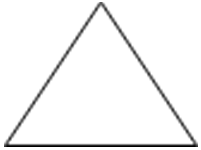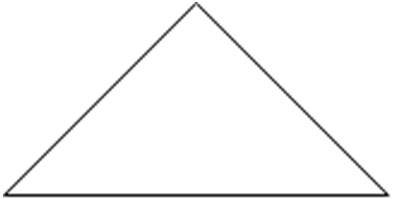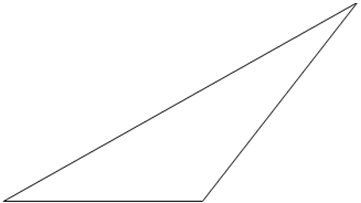This set of Class 8 Maths Chapter 3 Multiple Choice Questions & Answers (MCQs) focuses on “Polygon”. These MCQs are created based on the latest CBSE syllabus and the NCERT curriculum, offering valuable assistance for exam preparation.
1. A simple closed curve made up of only line segments is called a ________
a) polygon
b) square
c) rectangle
d) triangle
View Answer
Explanation: The options other than polygon are special cases of polygons. Polygon can have ‘n’ number of sides but all the sides should be joined by a straight line.
2. Which of the following is a polygon?
a) 
b) 
c) 
d) 
View Answer
Explanation: Incorrect options are not polygons because they have their side as curved lines. As we know that the polygon is a figure which consists of ‘n’ numbers of side but all of them should be straight lines and not curved.
3. Which of the following is not a polygon?
a) 
b) 
c) 
d) 
View Answer
Explanation: It cannot be considered as a polygon as all the sides aren’t connected. Polygons form a closed figure and hence this figure won’t be considered as a polygon.
4. The maximum number of sides that a polygon can have is ________
a) three
b) four
c) five
d) infinite
View Answer
Explanation: The definition of a polygon states that ‘A simple closed curve made up of only line segments is called a polygon.’ Here the basic condition for a polygon is that the figure should be a closed figure and there can be ‘n’ numbers for sides.
5. Any triangle is a ______ sided polygon.
a) 1
b) 2
c) 3
d) 4
View Answer
Explanation: A triangle is three sided polygon. The triangles are classified into three types (i) Equilateral Triangle (ii) Isosceles Triangle (iii) Scalene Triangle. This classification is done on the basis of length of each side and the angle between these sides.
(i) Equilateral Triangle: In this triangle all sides are of equal length and all the angles measure=60°

(ii) Isosceles Triangle: In this triangle, two sides are of equal length and the base angles are equal.

(iii) Scalene Triangle: In this triangle, all the sides are of different and all the angles are different in measure.

6. A polygon having ten sides is called decagon.
a) True
b) False
View Answer
Explanation: The word polygon is a Latin word (where ‘Poly’ means many ‘Gon’ means sides). This is derived by the number of sides possessed by the figure. Here we take an example of six sided figure in Latin six is hex therefore the name of the figure is ‘hexagon’. Similarly, ten sided figure is known as a decagon.
More MCQs on Class 8 Maths Polygon:
- Classification of Polygons
- Sum of Measures of the Exterior Angles of a Polygon
- Kinds of Polygons
- Properties of Polygons-1
- Properties of Polygons-2
- Special Cases in Polygons
To practice all chapters and topics of class 8 Mathematics, here is complete set of 1000+ Multiple Choice Questions and Answers.
If you find a mistake in question / option / answer, kindly take a screenshot and email to [email protected]
- Practice Class 9 Mathematics MCQs
- Practice Class 10 Mathematics MCQs
- Check Class 8 - Mathematics Books
